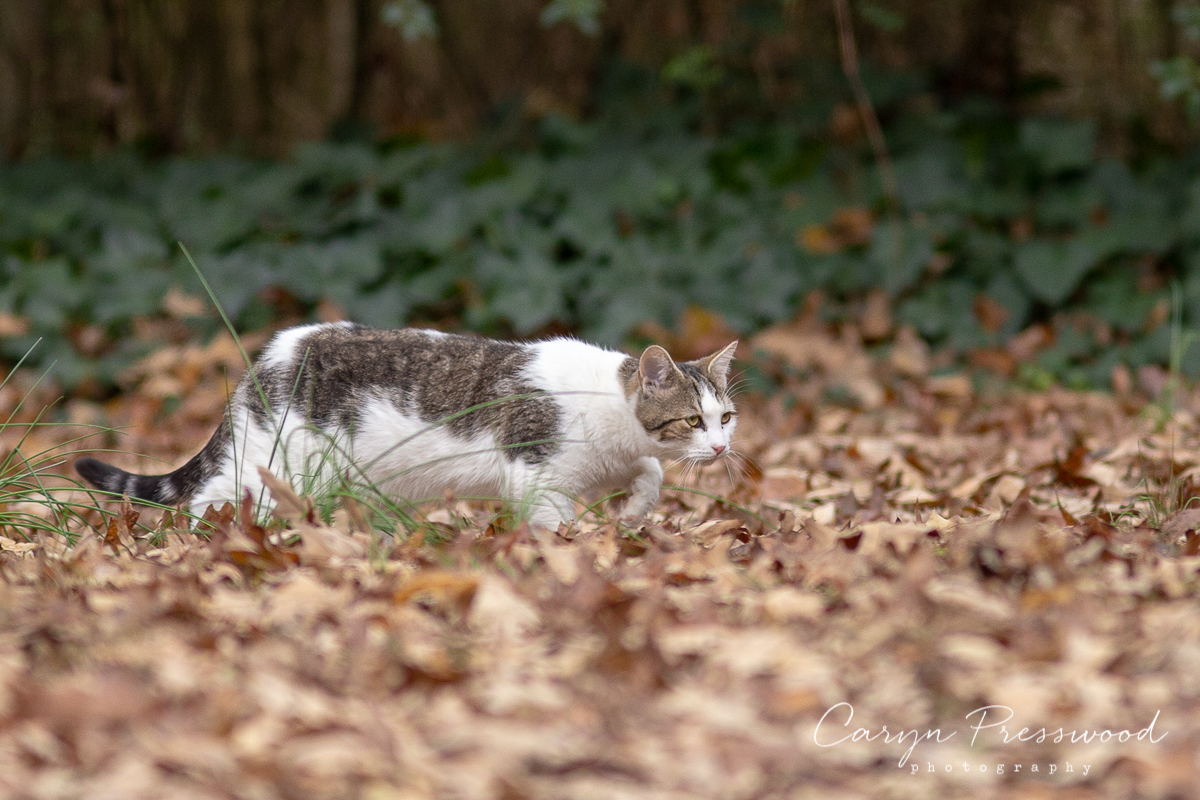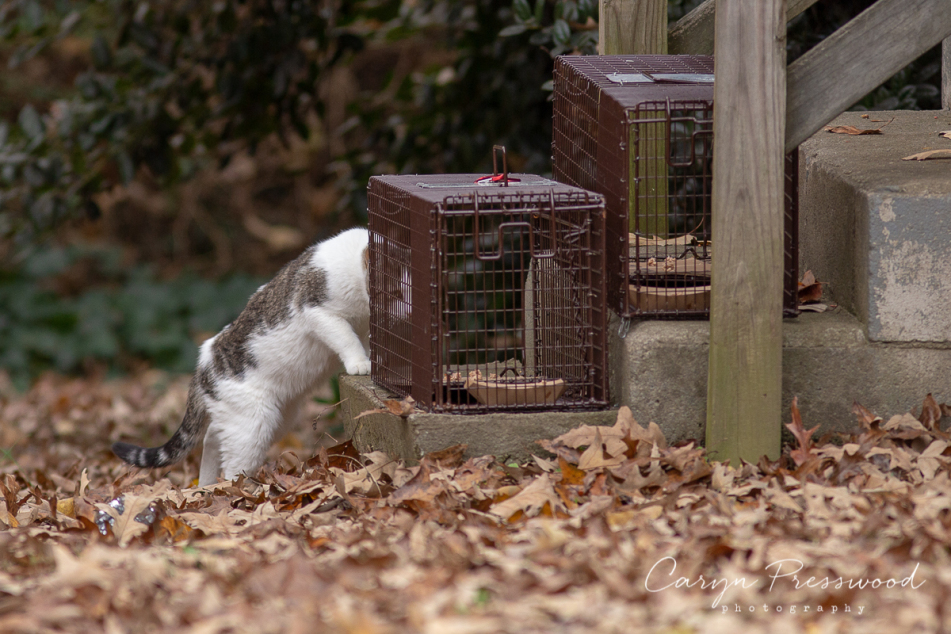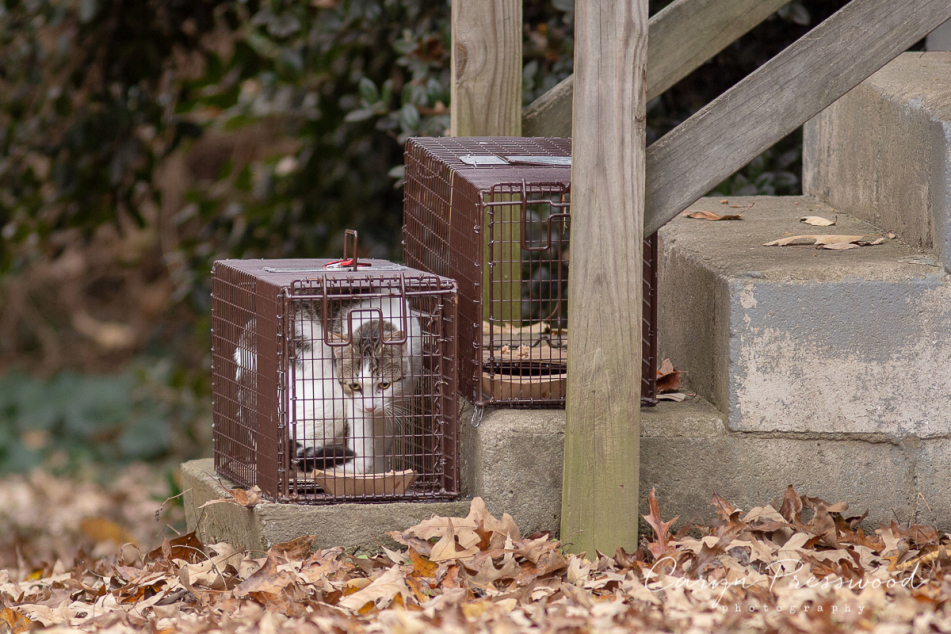TNR INSTRUCTIONS

BEFORE YOU TRAP - HAVE A PLAN
Before you head out to trap, the most important step is making sure you have a veterinary plan in place.
Please contact fridasandmaxfoundations@gmail.com ahead of time to confirm days of operation, drop-off times, and appointment availability at our partner Vet Clinics.
Do not trap cats first and then scramble for emergency vet appointments. While we sometimes can accommodate last-minute needs, clinics are often closed or fully booked — leaving a cat stuck in a trap, stressed and uncomfortable. A stressed cat and a stressed human are never a good combination.
STEPS TO PREPARE
Establish a feeding routine.
Our team has found that cats are much easier to trap once they’re used to a consistent feeding schedule. Feed them at the same time and place every day for at least one week to build trust and routine.
Withhold food before trapping.
The day before you plan to trap, stop feeding the cats for 24 hours. This is standard, humane trapping protocol and will not harm the cats. Hunger will encourage them to enter the trap.
Trap at night.
Trapping at night ensures the cats are ready for surgery the following morning. Always clean traps between uses to prevent the spread of disease.
Supplies You'll Need:
Canned tuna, jack mackerel, or fried chicken (KFC, Chick-fil-A, Bojangles)
One feral trap per cat
Thick newspaper or cardboard to line the trap floor
A large towel or sheet to completely cover each trap

START TRAPPING
To begin trapping, line the bottom of the trap with newspaper or cardboard to create a comfortable surface and mask the metal. Then, place a small trail of food leading from the entrance to the back of the trap, where the trip plate is located. This encourages the cat to walk all the way in. Many trappers have found success using two traps placed side by side, facing opposite directions. This increases the chance that a cat will feel comfortable entering at least one of them.
Once your traps are set, step away and remain out of sight—cats are far less likely to enter a trap if they sense someone nearby. If you're trapping in your own yard, go indoors. In public spaces, stay nearby but discreet, always keeping traps within your line of sight. Never leave traps completely unattended.
Be patient. Trapping a feral cat can take time—sometimes a few hours. Only approach the trap once you’re certain a cat is fully inside and the trap has closed securely. Moving too soon can scare the cat away and make future attempts more difficult. If you're trapping multiple cats, cover the first occupied trap with a towel or blanket and move it out of view from the others. This helps prevent alarming the rest of the colony. Hunger is a strong motivator—cats will continue to enter traps if they’re hungry and conditions feel safe.

AFTER TRAPPING
Once a cat is trapped, immediately cover the entire trap with a towel or blanket. This helps calm the cat, reduces stress-related behaviors, and minimizes the risk of injury during transport. A covered trap also helps prevent the spread of illness between cats when traps are placed near each other at the clinic.
Before proceeding, check each cat for an ear tip—a universal sign that the cat has already been spayed or neutered. The ear tip is typically a small, flat notch on the left ear, done while the cat is under anesthesia during a previous TNR procedure.
If the cat does have an ear tip, they’ve already been fixed and can be released right away. Simply rebait the trap and set it again for the next cat.
Handling trapped cats with care and attentiveness ensures their safety and contributes to a smooth, successful TNR effort.

HOUSING AND TRANSPORT BEFORE SURGERY
After trapping, hold the cats in their traps overnight before surgery. Keep them in a dry, temperature-controlled space such as a basement, garage, enclosed porch, or spare room. Never leave cats in traps exposed to extreme heat, cold, or direct sunlight. If the space is too warm, use a box fan to improve airflow. To protect both the cats and your home, ensure no pets or wild animals can reach the trapped cat. Place cardboard and newspaper under the traps to catch urine and keep the area clean.
Important: Cats must fast for at least 8 hours before surgery—no food during this period. When transporting them in your car, line the surface under the traps with cardboard and newspaper for cleanliness and stability.
HOUSING AFTER SURGERY
After surgery, allow the cat to recover overnight in the same trap, still fully covered to reduce stress. To provide food and water, gently slip non-breakable dishes (like paper or plastic) under the door of the trap. Watch carefully to make sure the cat doesn’t escape. A trap divider is highly recommended for safer and easier access. Feed the cat as much as they'll eat before release—it helps boost their energy and aids recovery. Male cats can typically be released the following morning or after 24 hours. Female cats should be held for 48 hours to ensure proper healing. Never keep a cat confined for longer than 48 hours unless your veterinarian advises otherwise.